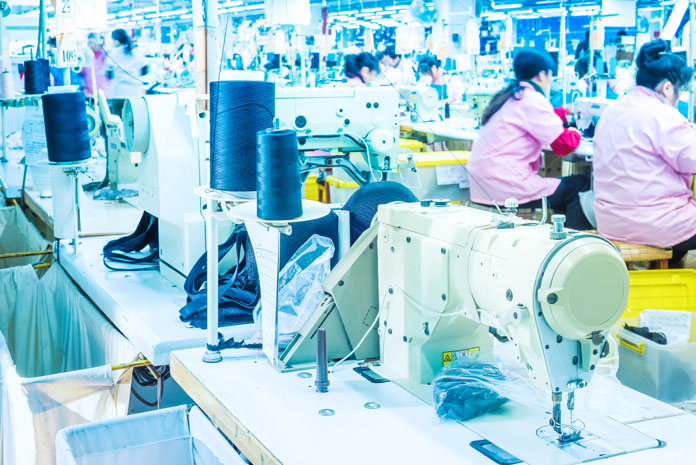Garments Strategy In Pipeline
 Garment exports accounted for 78% of the country’s total exports in 2016.
Garment exports accounted for 78% of the country’s total exports in 2016.
The Economy Ministry, garment & footwear makers, and the ILO's Better Factory Cambodia program are drafting a long term strategy to maintain high growth and increase high-end production by at least 50% by 2025.
According to a draft outline, the 2018-2025 strategy will look at the key challenges of the industry. These are likely to be high input and production costs, industrial relations, productivity and production capabilities, business environment, external environment and competition.
Kaing Monika, deputy secretary-general for the Garment Manufacturers Association in Cambodia, welcomed the plan, saying it gave new momentum to the industry.
“It is a clear strategy and policy response to maintain growth and improve human resources to make the industry more competitive,” said Monika. “The government is putting in an effort to come up with a sound eight-year strategic plan to sustain and develop the garment and footwear industry. GMAC appreciates the effort,” he added.
“Mainly, the policy will help cost-cutting and improve the efficiency of the industry, which includes skills development to move up the value chain and improve productivity. There will also be a focus on industrial relations improvement to bring about a stable and peaceful production environment.”
Hiroshi Suzuki, CEO and chief economist for the Business Research Institute for Cambodia (BRIC), said that the garment sector in Cambodia enjoyed low labour costs and good logistics infrastructure. However, he said foreign businesses controlling the industry had shifted factories from country to country to seek lower labour costs.
Suzuki pointed out that China was graduating from this labour-intensive industry and had shifted its investment to much higher value-added sectors such as manufacturing cars and smartphones, and services such as IT.
“It seems that Cambodia could enjoy returns from the garment industry in the coming 10 to 20 years but competition from rival countries has already started,” he said. “Myanmar, Sri Lanka and African countries such as Ethiopia are becoming strong competitors using lower labour cost and improved infrastructure.”
Because of this emerging competition, according to Suzuki, it was necessary to have a comprehensive strategy that covered the training of workers to improve connectivity within the region and the global supply chain. “At the same time, the gradual improvements in the sector could help construct the base for much higher value-added industries,” he said.
Early last month, GMAC’s Cambodia Garment Training Institute opened its first class, providing intensive training to students working in the industry. According to Cambodia’s General Department of Customs and Excise, exports of garments and footwear rose by 7.2% to $7.3 billion in 2016, up from $6.8 billion in 2015.
The sector remains the most important component of Cambodia’s exports, with garment and footwear exports accounting for 78% of the country’s total exports in 2016. This ratio edged down slightly from 81% in 2015.
“Footwear continues to be dwarfed by garment exports, but is rising as a share of the sector’s total,” the department said. The share of the sector’s exports going to the US market continued to drop from 29% in 2015 to 25% in 2016.
The EU remains the most important market destination for Cambodia’s garment and footwear exports, representing 40% of the sector’s exports in 2016, down from 43% in 2015.
This article was originally published in the Khmer Times. [democracy id="6"]